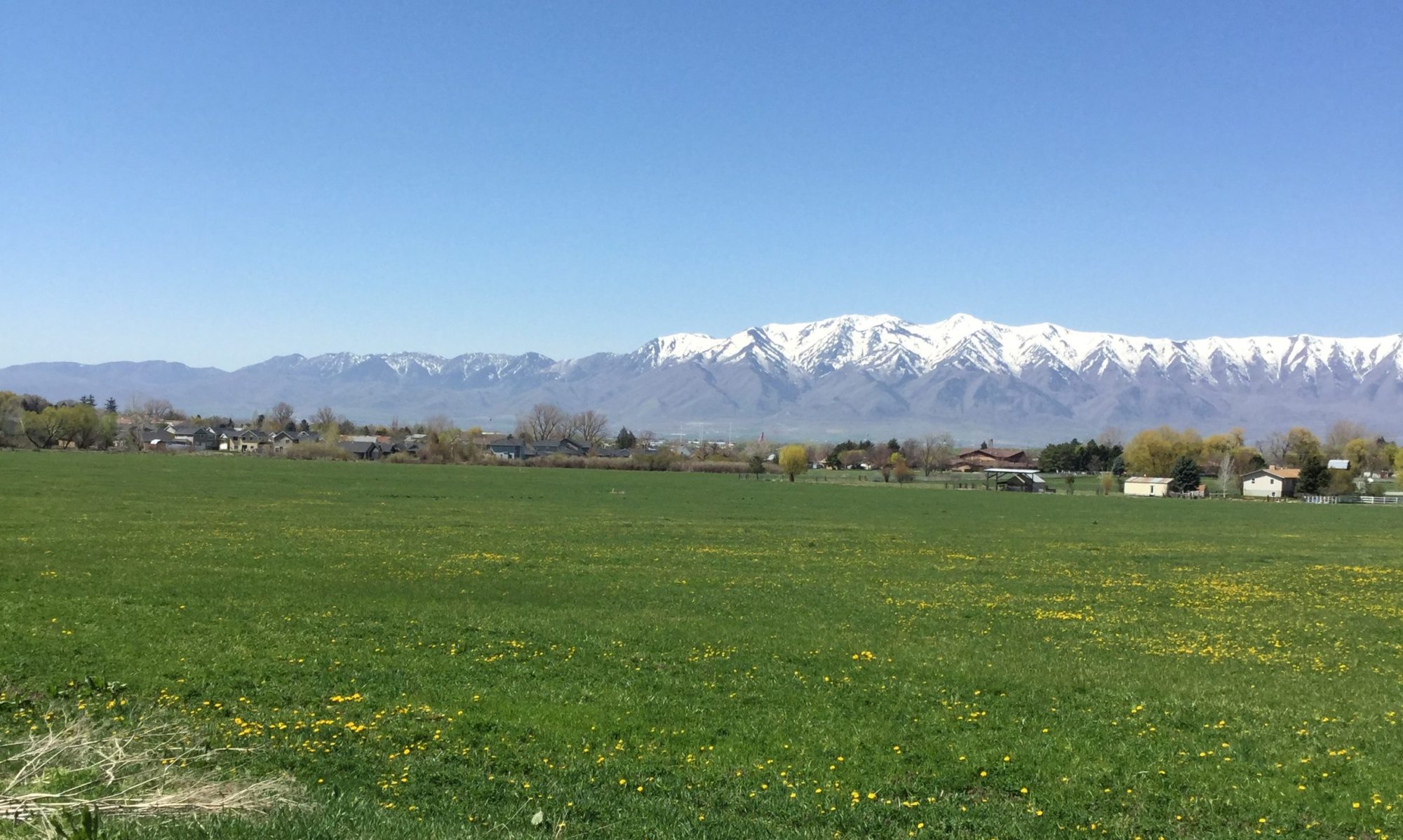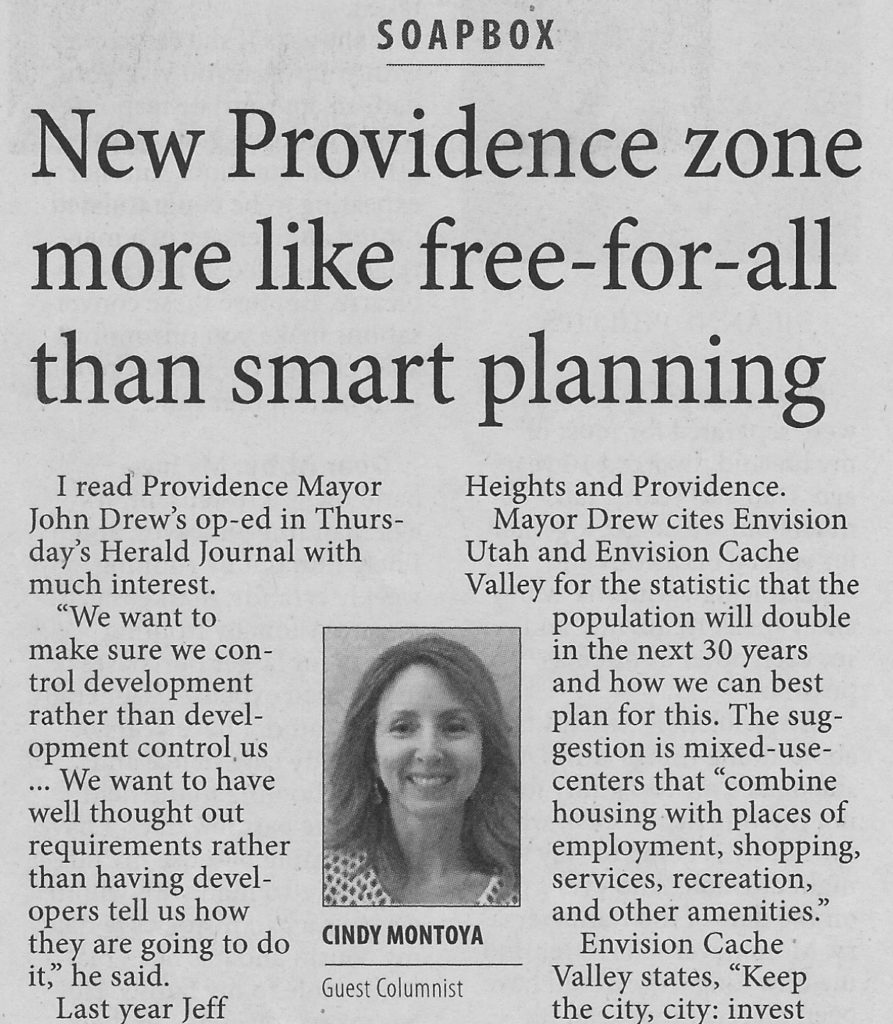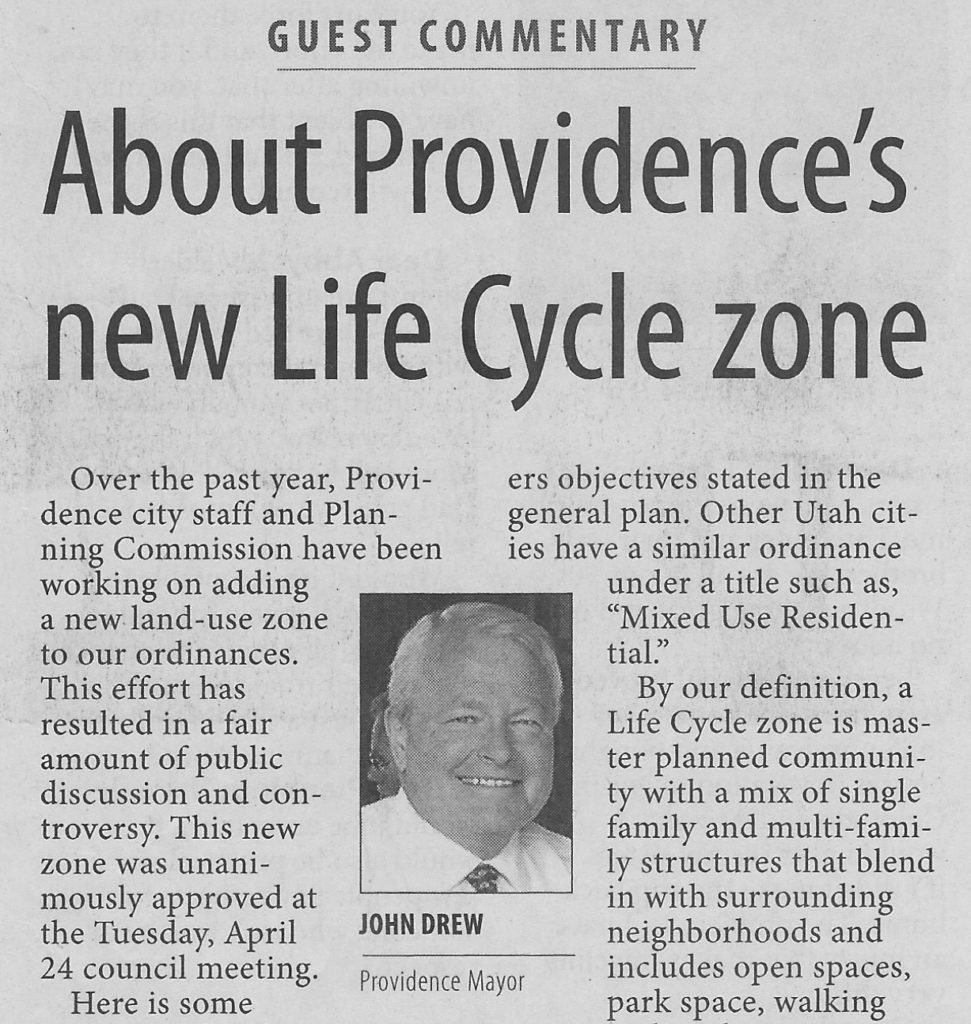The following from Providence resident Cindy Montoya appeared as a ‘Guest Columnist’ in the Herald Journal in print and online on April 27, 2018.
Soapbox: New Providence zone more like free-for-all than smart planning
Cindy Montoya, Guest columnist
Apr 27, 2018
I read Providence Mayor John Drew’s op-ed in Thursday’s Herald Journal with much interest.
“We want to make sure we control development rather than development control us … We want to have well thought out requirements rather than having developers tell us how they are going to do it,” he said.
Last year Jeff Jackson, who owns Ironwood Development, petitioned River Heights to annex the “Chugg Property,” a piece of agricultural land that he now owns which sits between River Heights and Providence. His original plan was to put a mix of 56 single family homes, 52 active adult homes, and 68 townhouses on this land. The citizens of River Heights mobilized against what they saw as a high-density development and asked their city to zone the land R-1-15, which is 1/3 acre lots.
While Jackson’s petition was pending in River Heights, he was also talking to the Providence city government about what Mayor Drew has been calling Life Cycle Residential zoning, which requires a mix of different types of housing: single family, duplexes, townhouses and apartments.
On December 12, 2017, River Heights City Council voted to accept for “further consideration” the Chugg/Ironwood Annexation Petition. On the same day, Ironwood Development withdrew its annexation petition because River Heights was against townhouses. When the River Heights City Council voted to accept the annexation petition for consideration anyway, Craig Winder, attorney for Ironwood Development, threatened a lawsuit. He said the issue was all about control.
Ironwood then petitioned Providence city to annex the land. Ironwood, now known as Ridgeview Park LLC, presented a plan to Providence city that was much higher density than what was presented to River Heights: On 38 acres, it wanted to develop 47 single family homes, 43 active adult homes and 116 townhouses. Only they don’t call it 116 townhouses. They call it 29 4-plex townhouses. Sounds so much nicer, doesn’t it?
But it’s still an increase from 176 homes on 53 acres to 206 homes on 38 acres. And an addition of 48 more townhouses.
Providence city has had a plan to put a bridge over Spring Creek and extend Spring Creek Parkway for 20 years, but they don’t have the money to do it. Ironwood Development will do it for them if they can put lots of townhouses in a neighborhood of single-family homes. All the traffic will funnel through neighborhoods in River Heights and Providence.
Mayor Drew cites Envision Utah and Envision Cache Valley for the statistic that the population will double in the next 30 years and how we can best plan for this. The suggestion is mixed-use-centers that “combine housing with places of employment, shopping, services, recreation, and other amenities.”
Envision Cache Valley states, “Keep the city, city: invest in our towns — our centers for living, industry and culture. Keep the country, country: protect the agricultural and natural lands that sustain us.”
An op-ed in the Deseret News last October tells what is happening in Cache Valley.
“Farmland is being sold and developed into multiunit housing developments faster than you can say trouble. Conversely, the population of Logan City is shrinking in proportion, especially the student population at Logan’s city schools. Logan is facing a crisis with both its downtown business district and its school district…you can hear a sucking sound created by the vacuum of the businesses and people leaving Logan.”
This is the opposite of Envision Utah’s and Envision Cache Valley’s goals. Yet this is exactly what’s happening with the Chugg property.
There are currently 200 townhouses in Providence. A development of 164 more has been approved behind Macey’s, which makes sense because there is easy access to main roads in this area. This is also an Ironwood project. It comes close to doubling the number of townhouses in Providence. And that’s not mentioning all the homes being built in other areas of Providence.
If the population might double by 2050, why is Providence trying to triple the number of townhouses in 2018? This doesn’t sound like smart planning. It sounds like a development free-for-all.
Last Tuesday evening the Providence City Council unanimously approved Life Cycle Residential Zoning. Before they voted, Skarlet Bankhead, Providence Administrative Services director, told the residents in attendance, many of whom spoke out against townhouses in single family neighborhoods, that our government does listen to us. She also said that although the new zone doesn’t apply to any specific property yet, the city has been in discussions with Jeff Jackson since last year.
Makes one wonder who “us” is.
Cindy Montoya is a mother, writer and artist, who spent many years moving around the country while her husband worked for the federal government. Five years ago, they decided to settle down in Providence.



